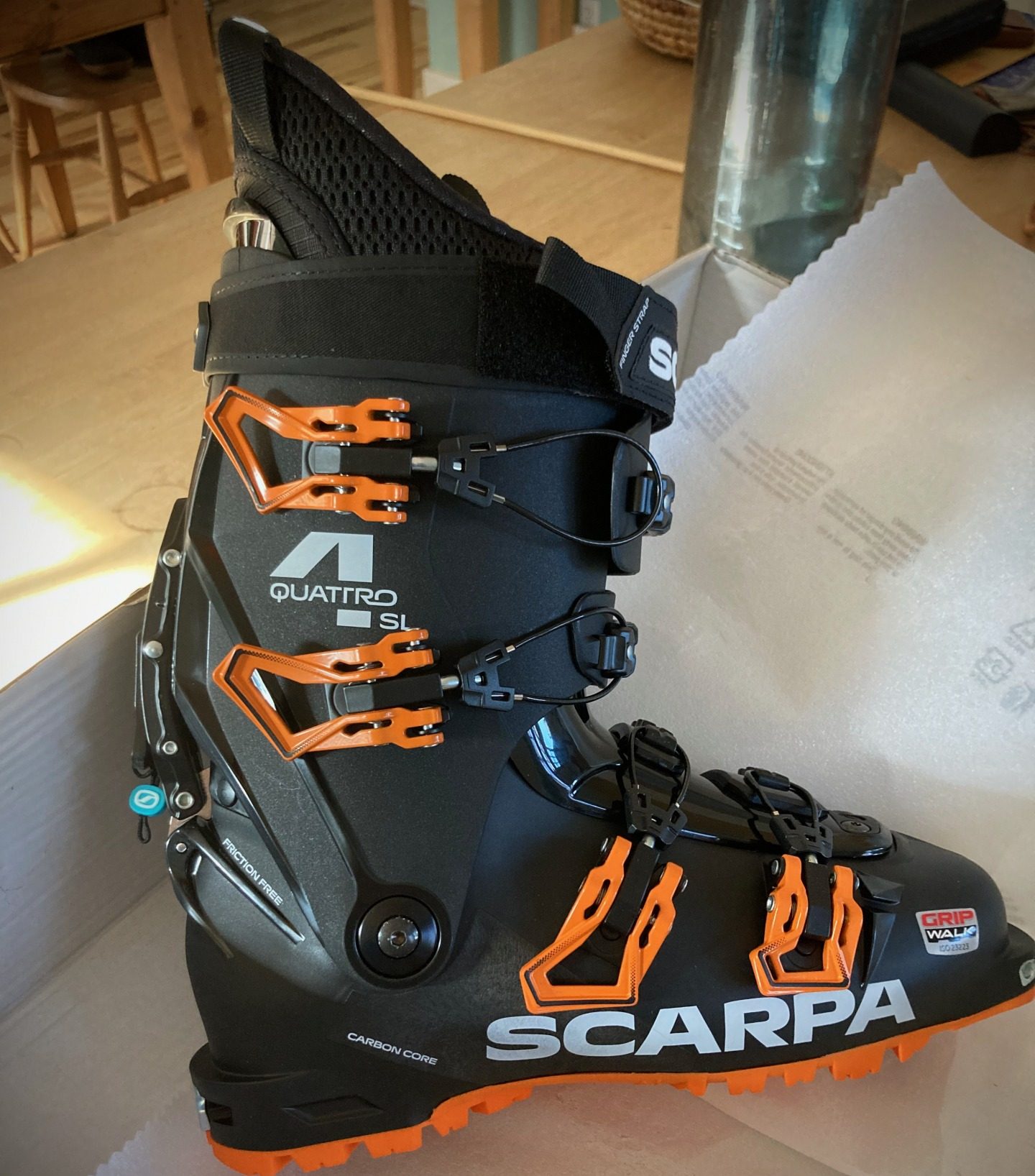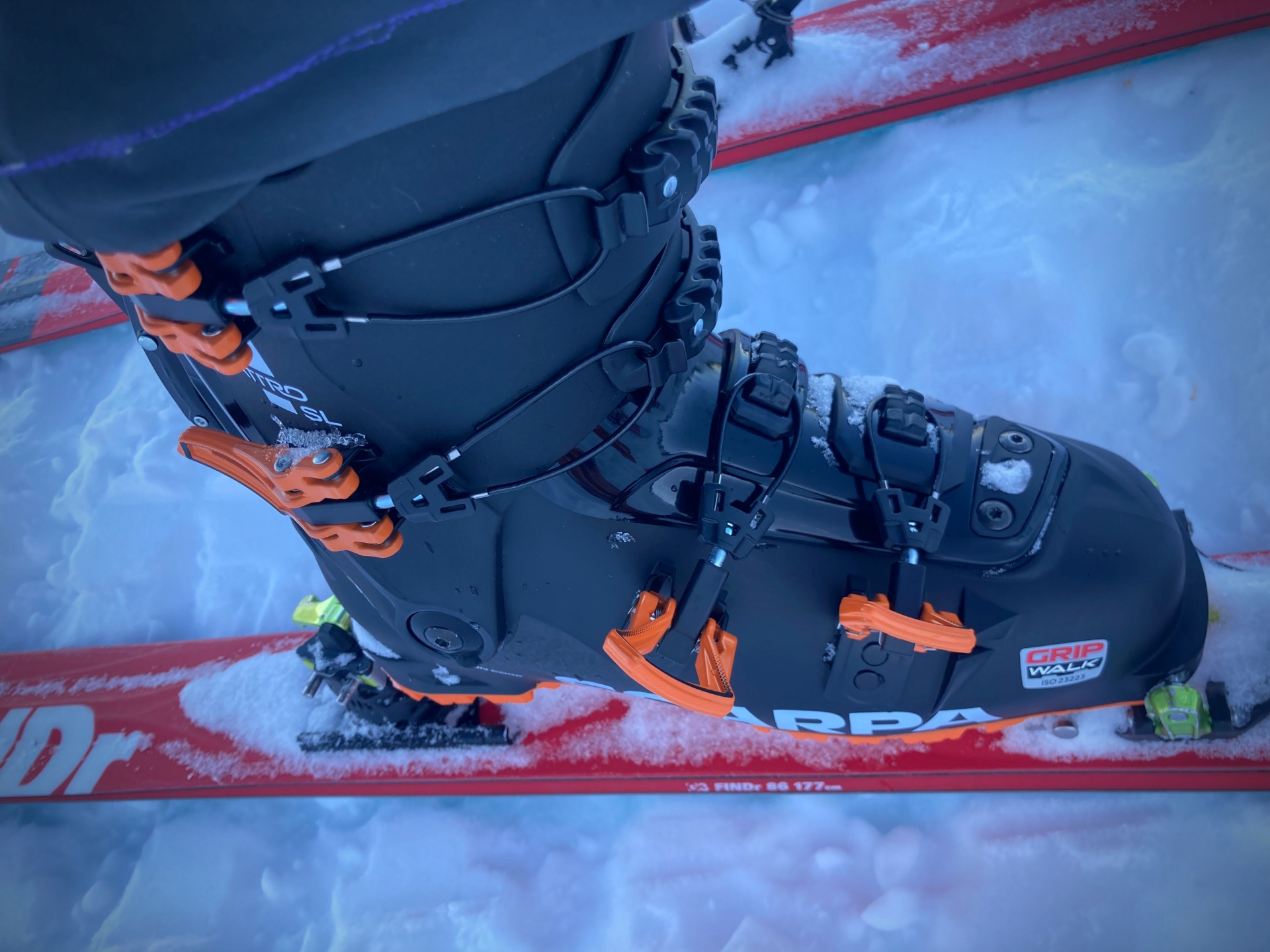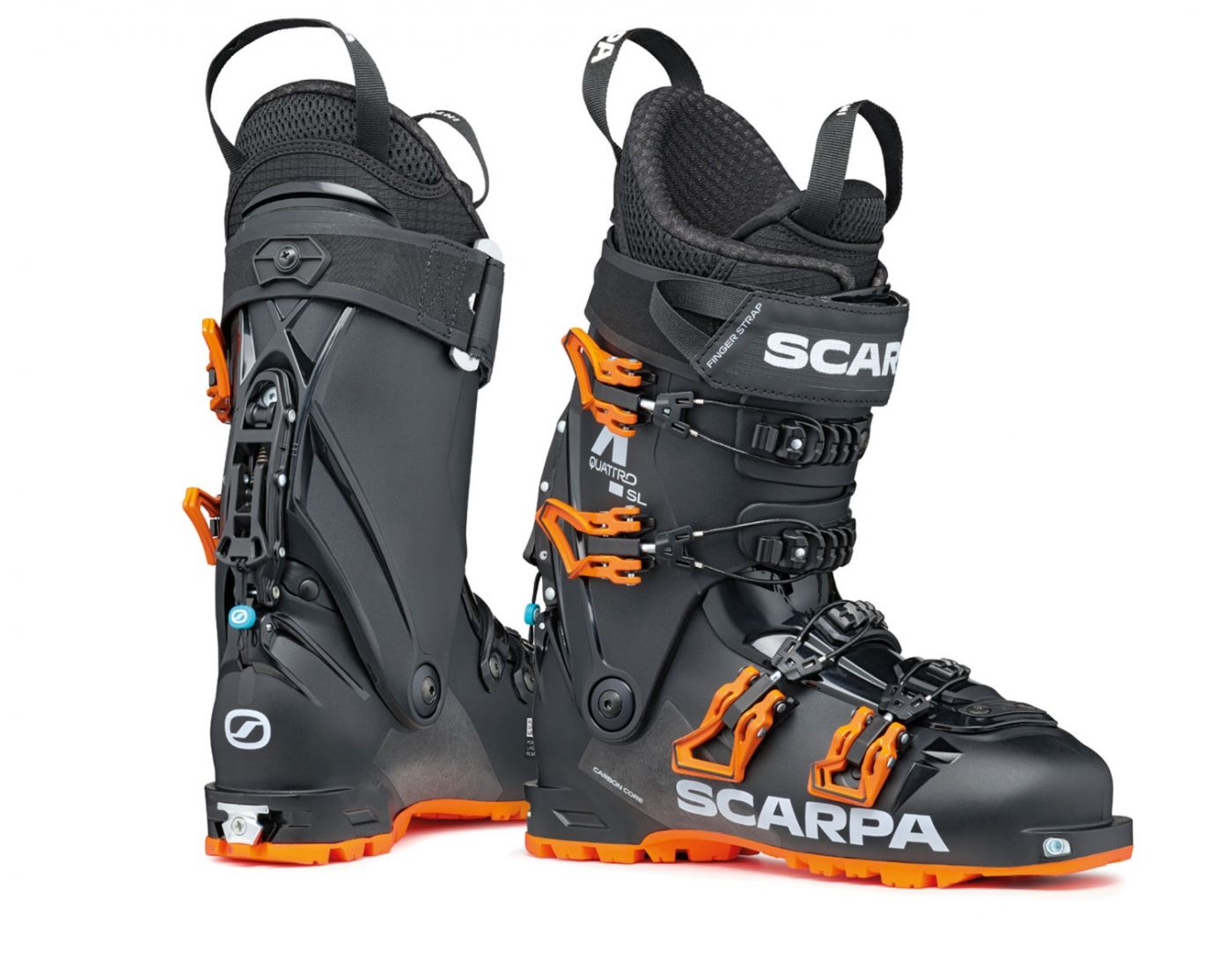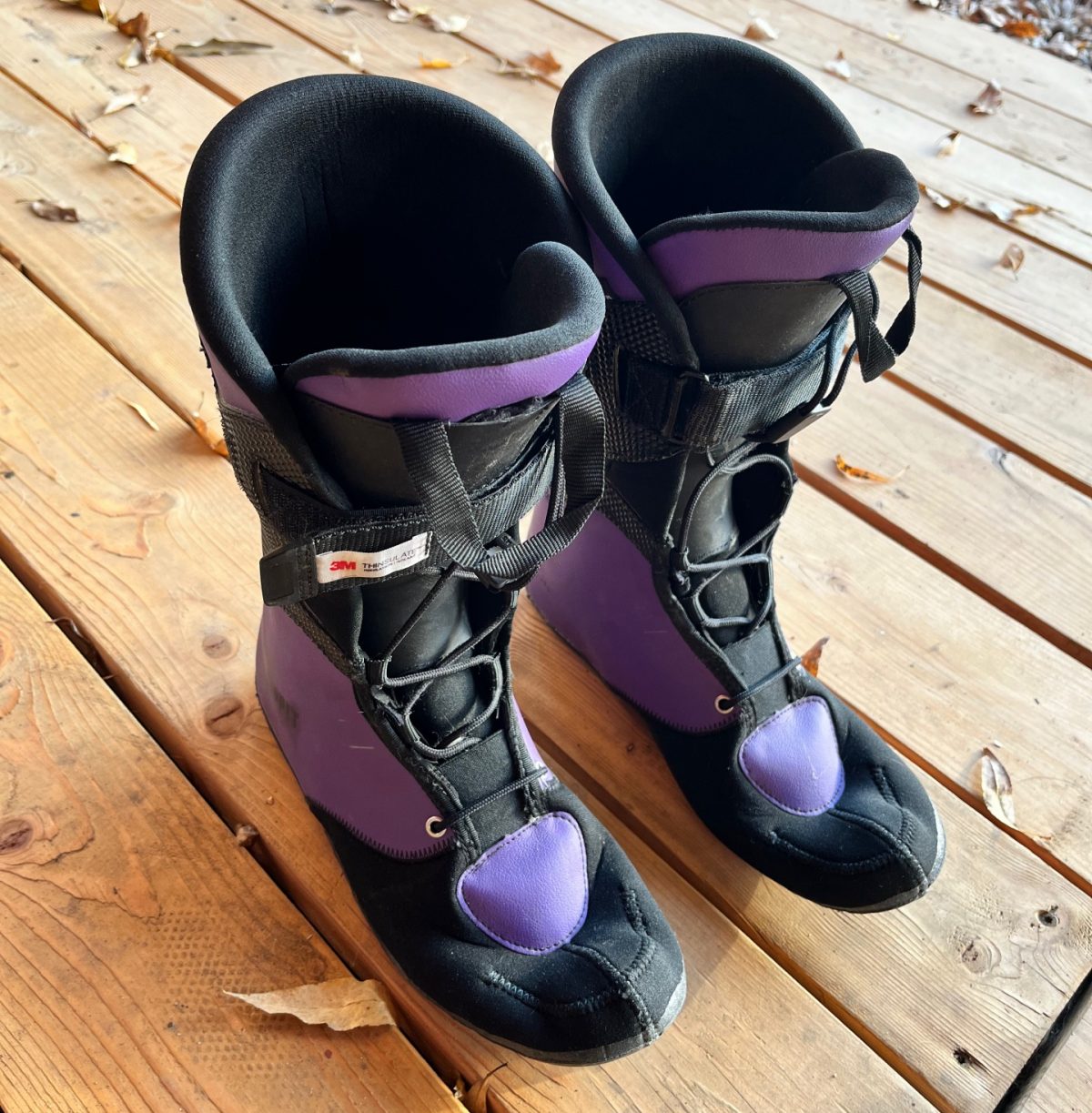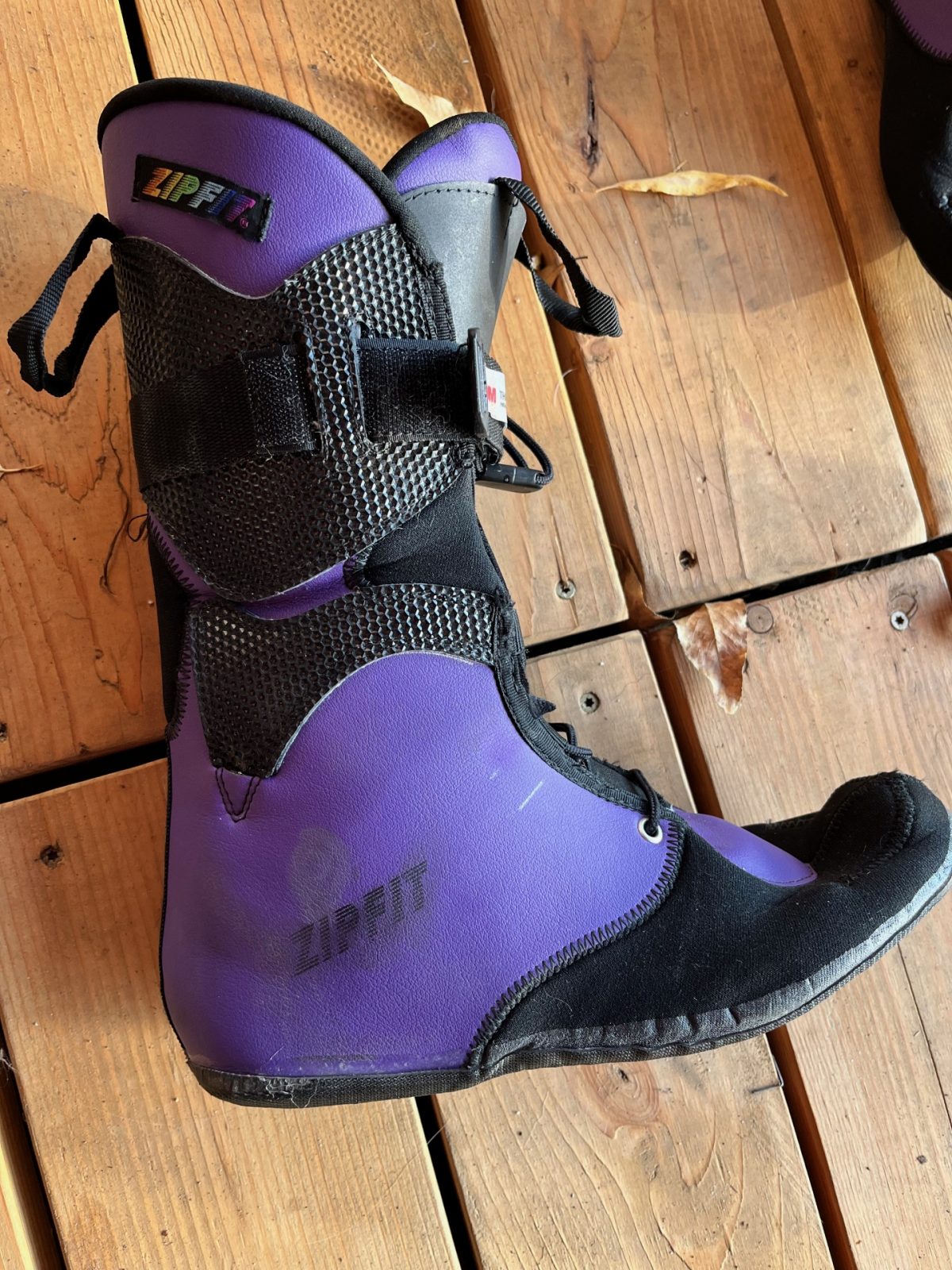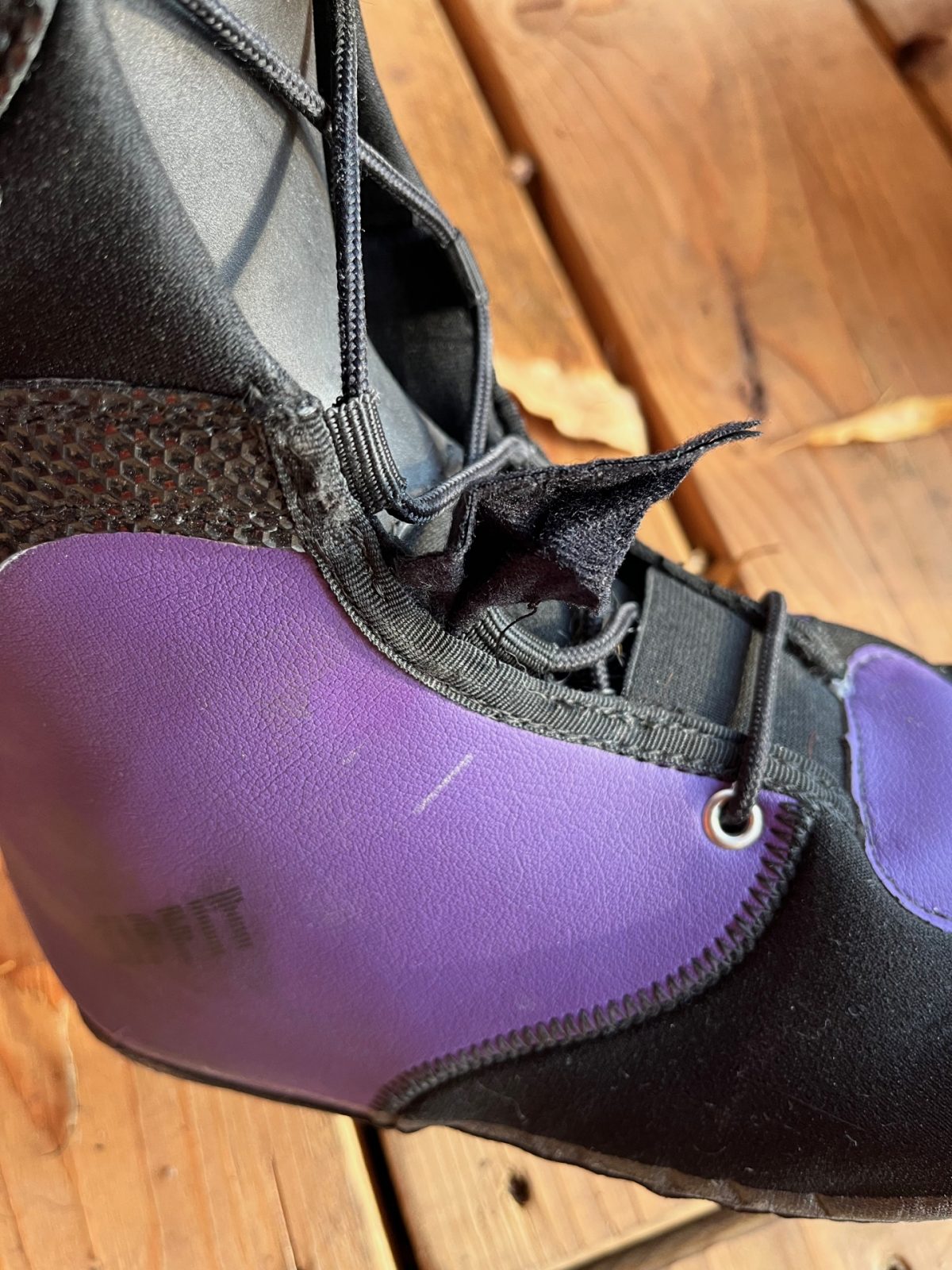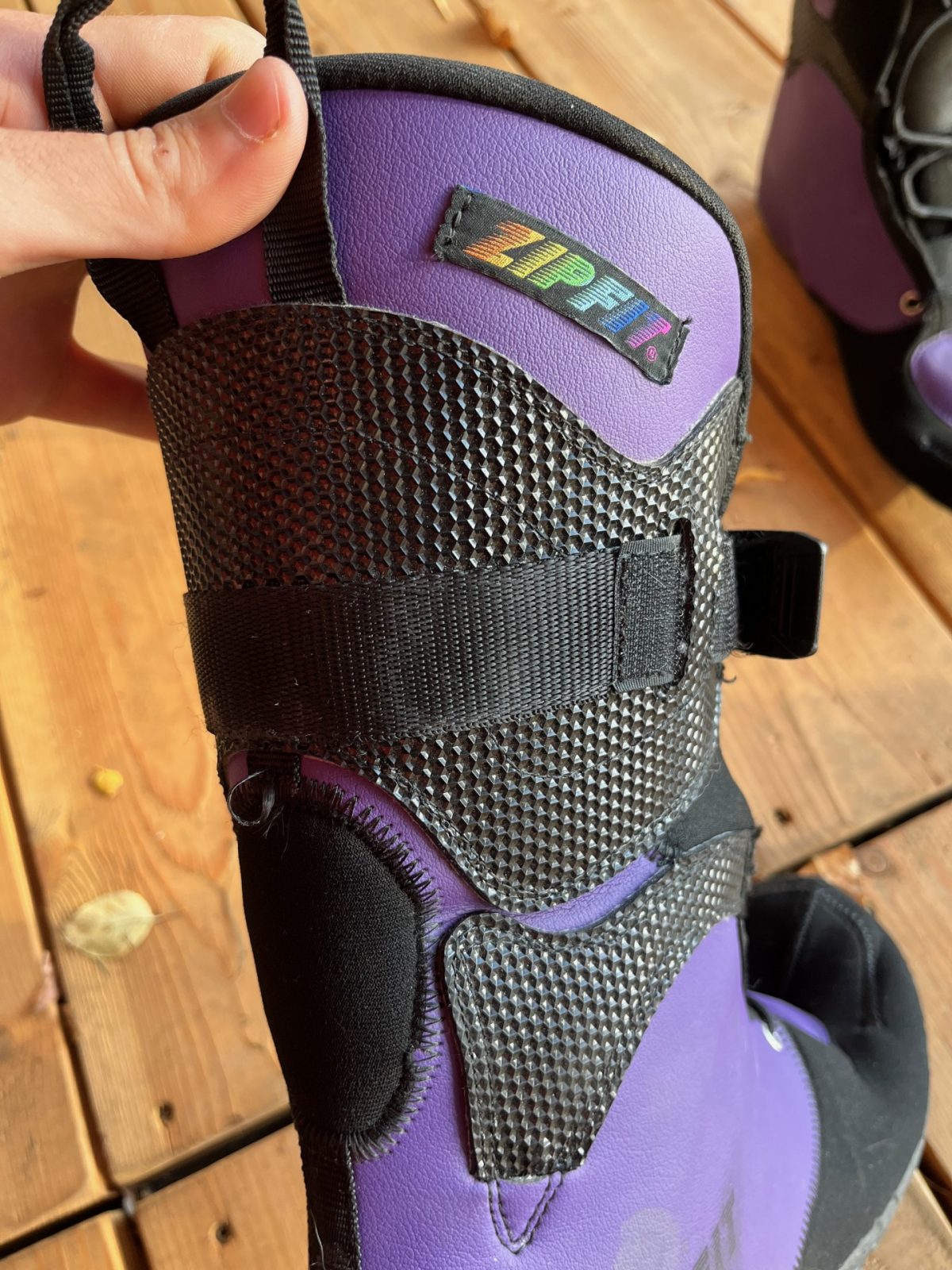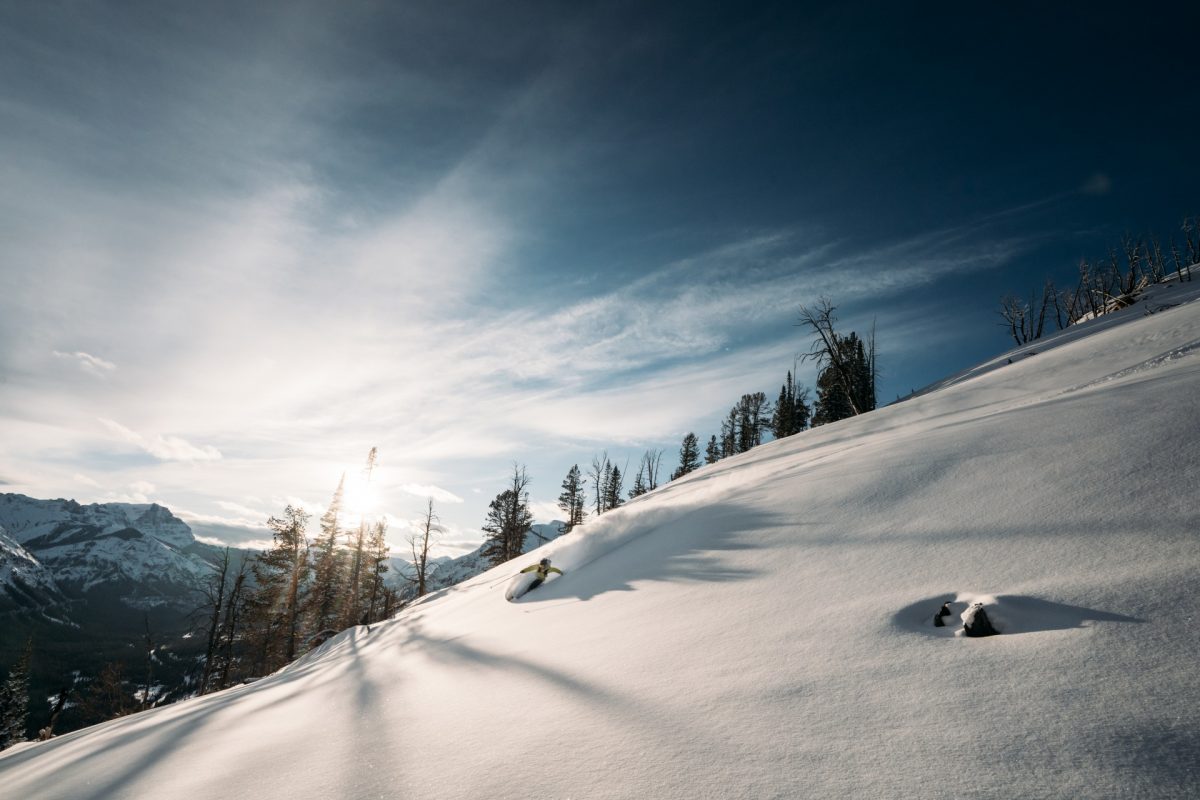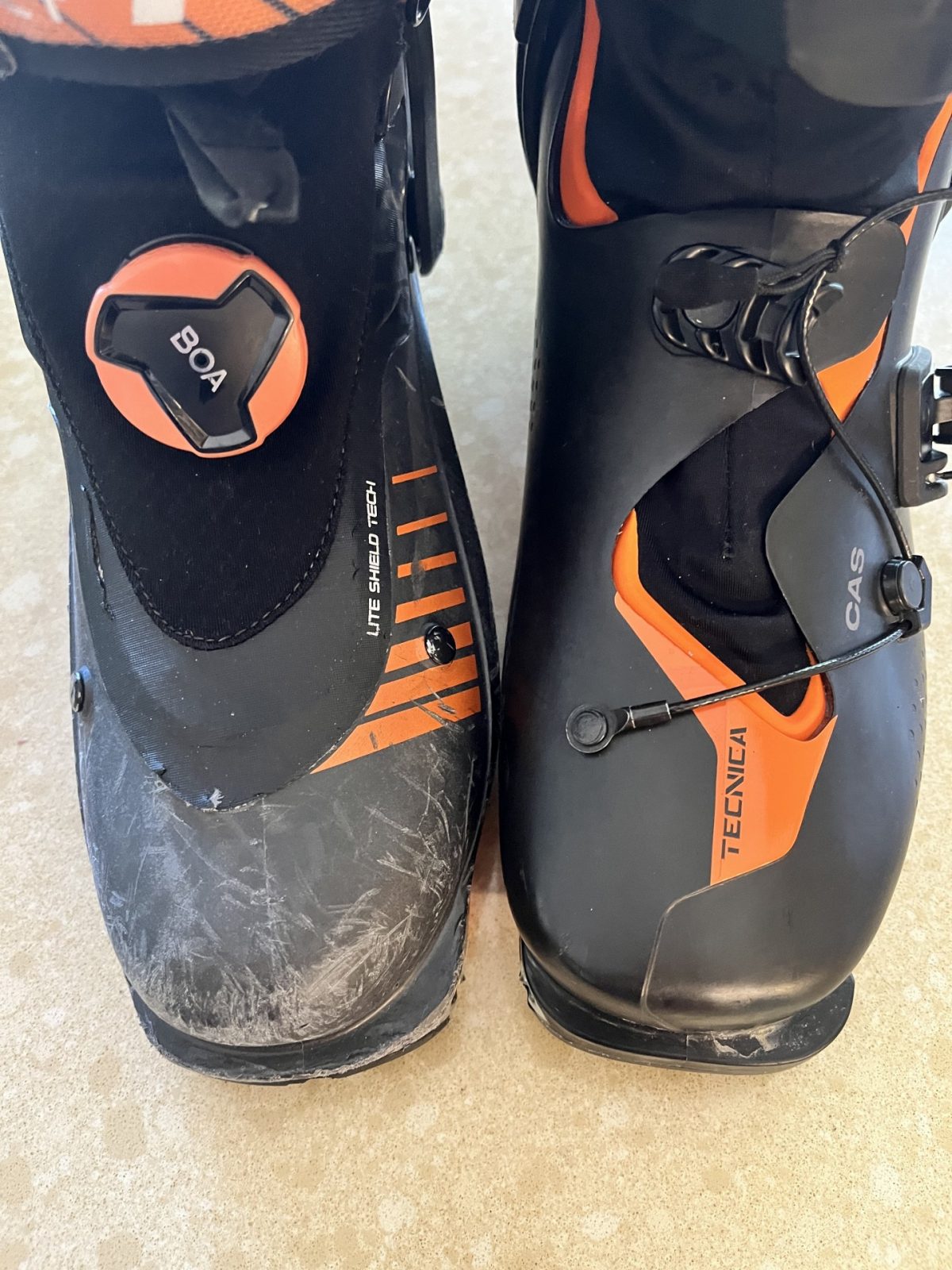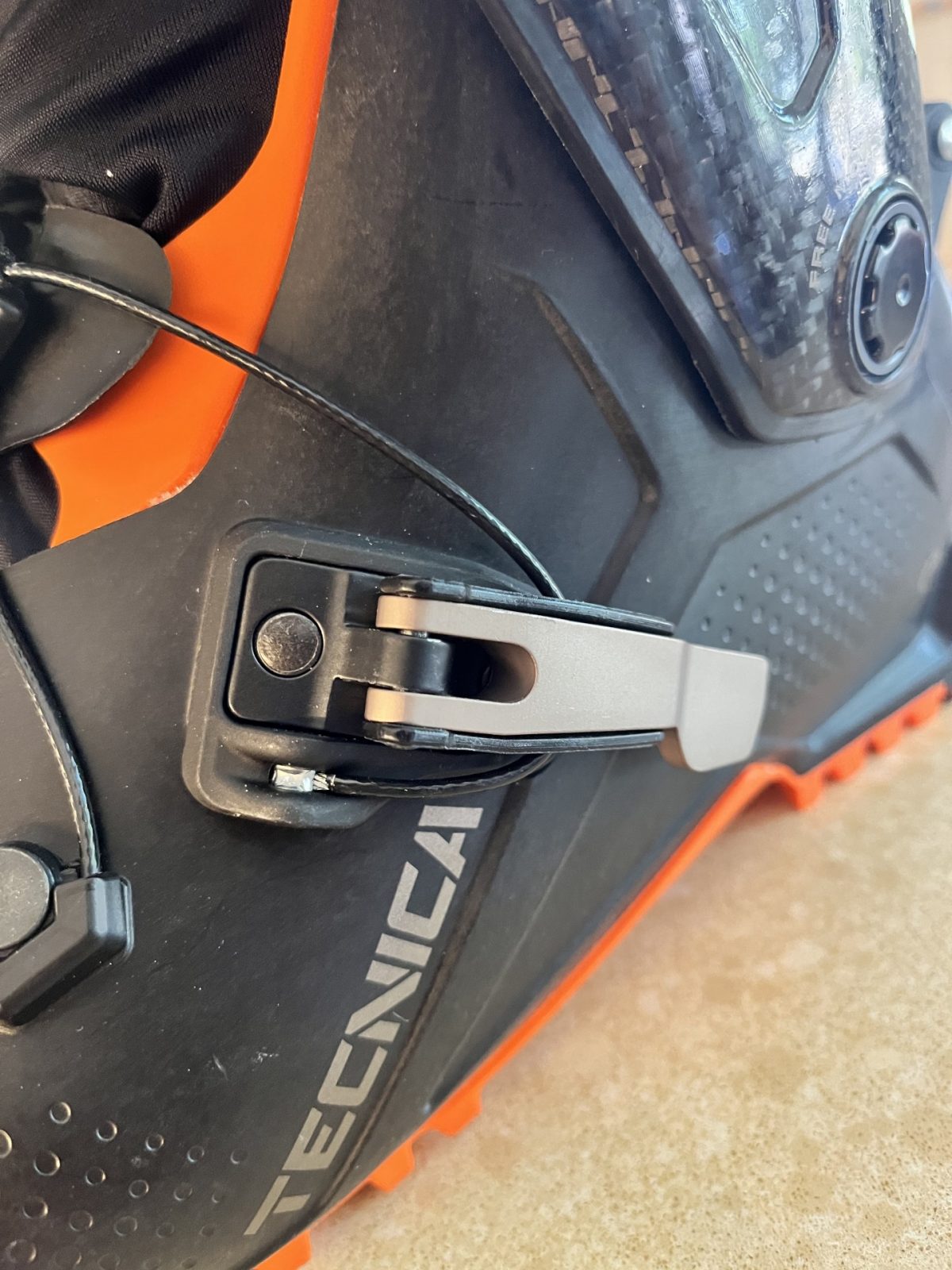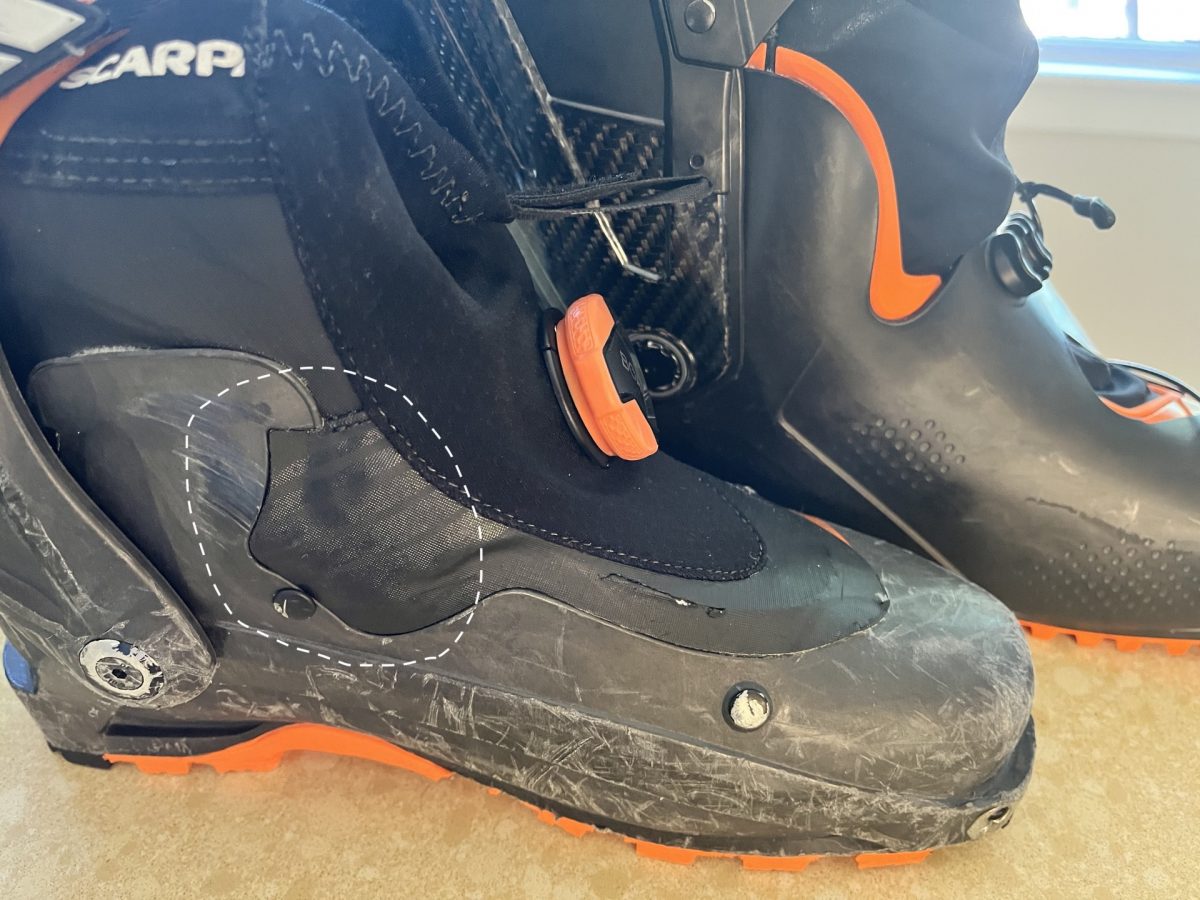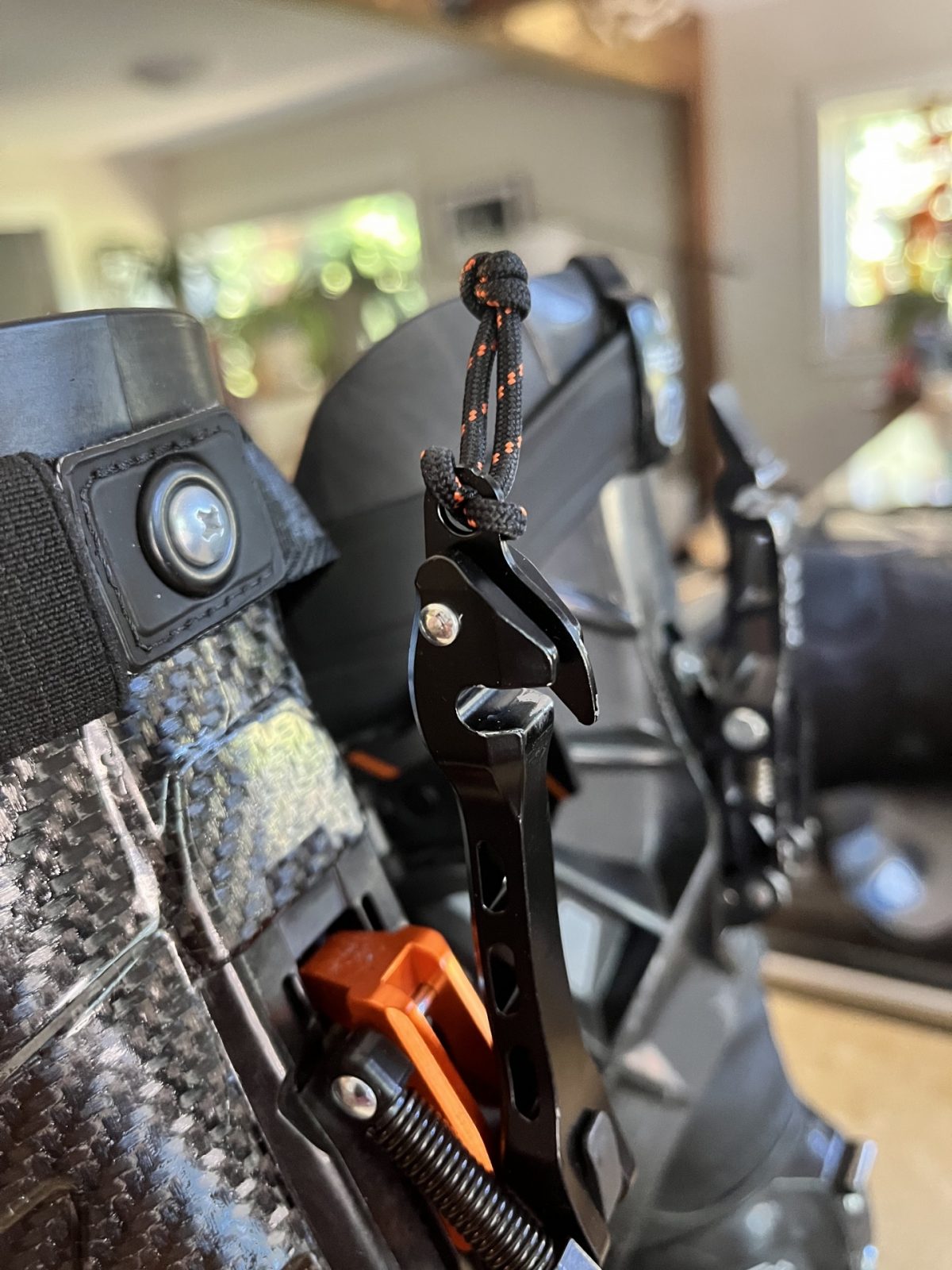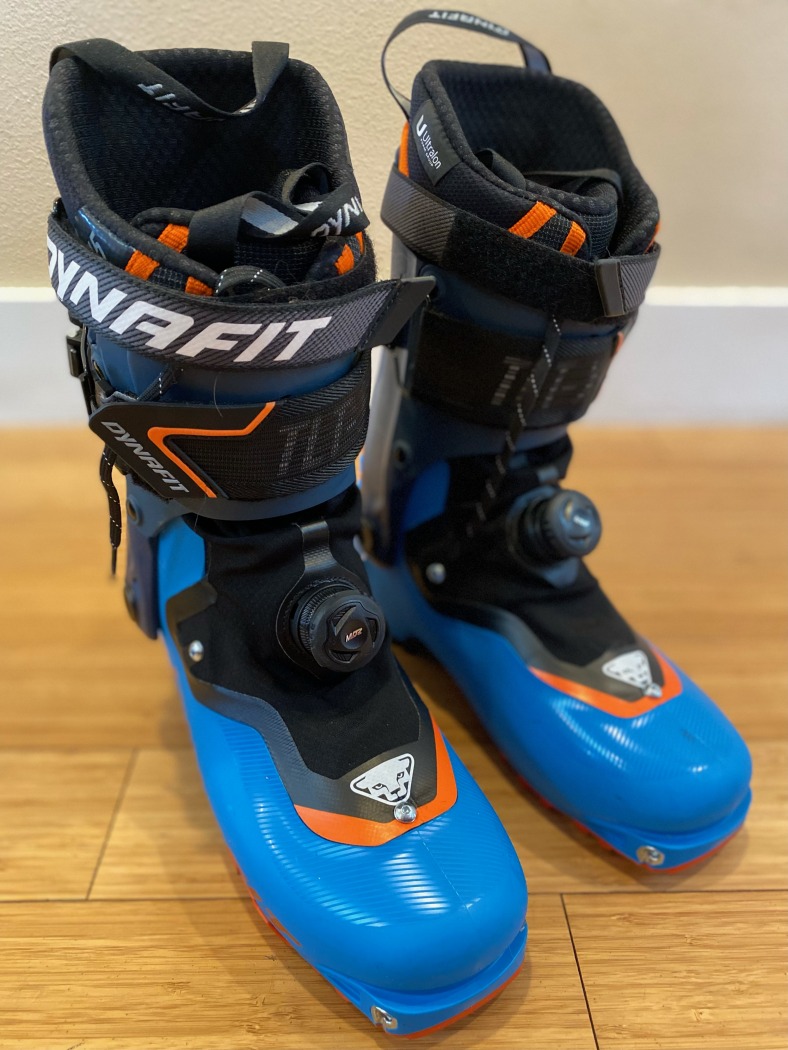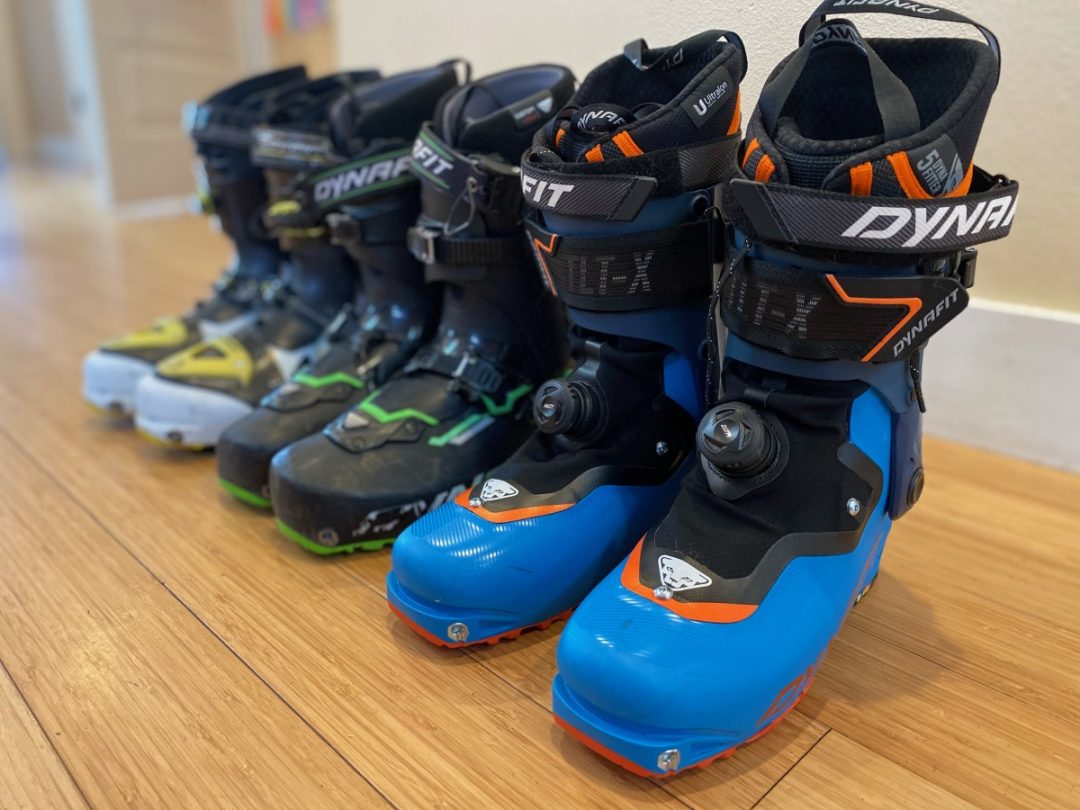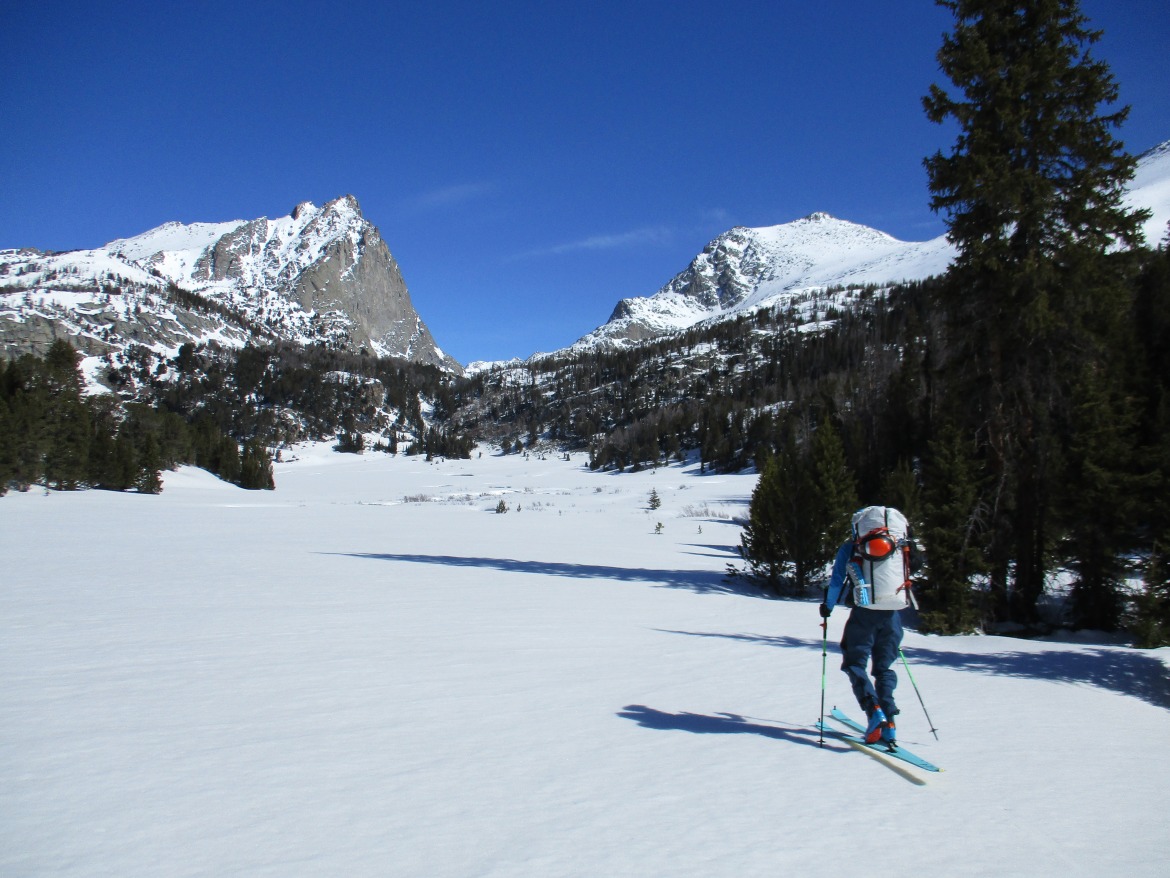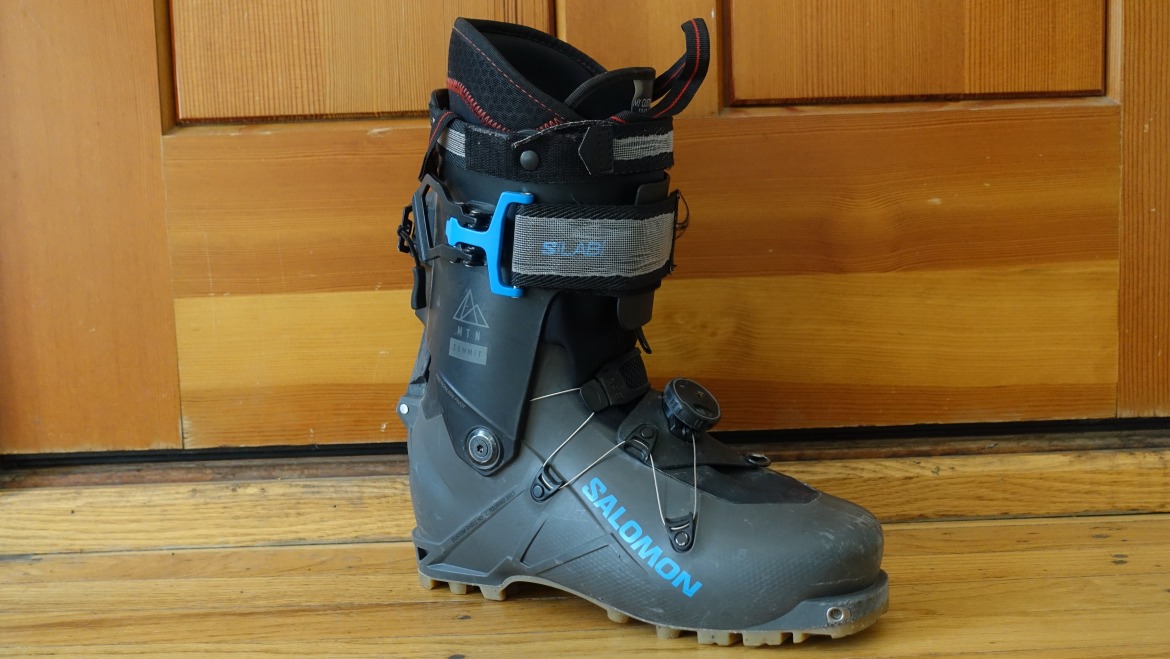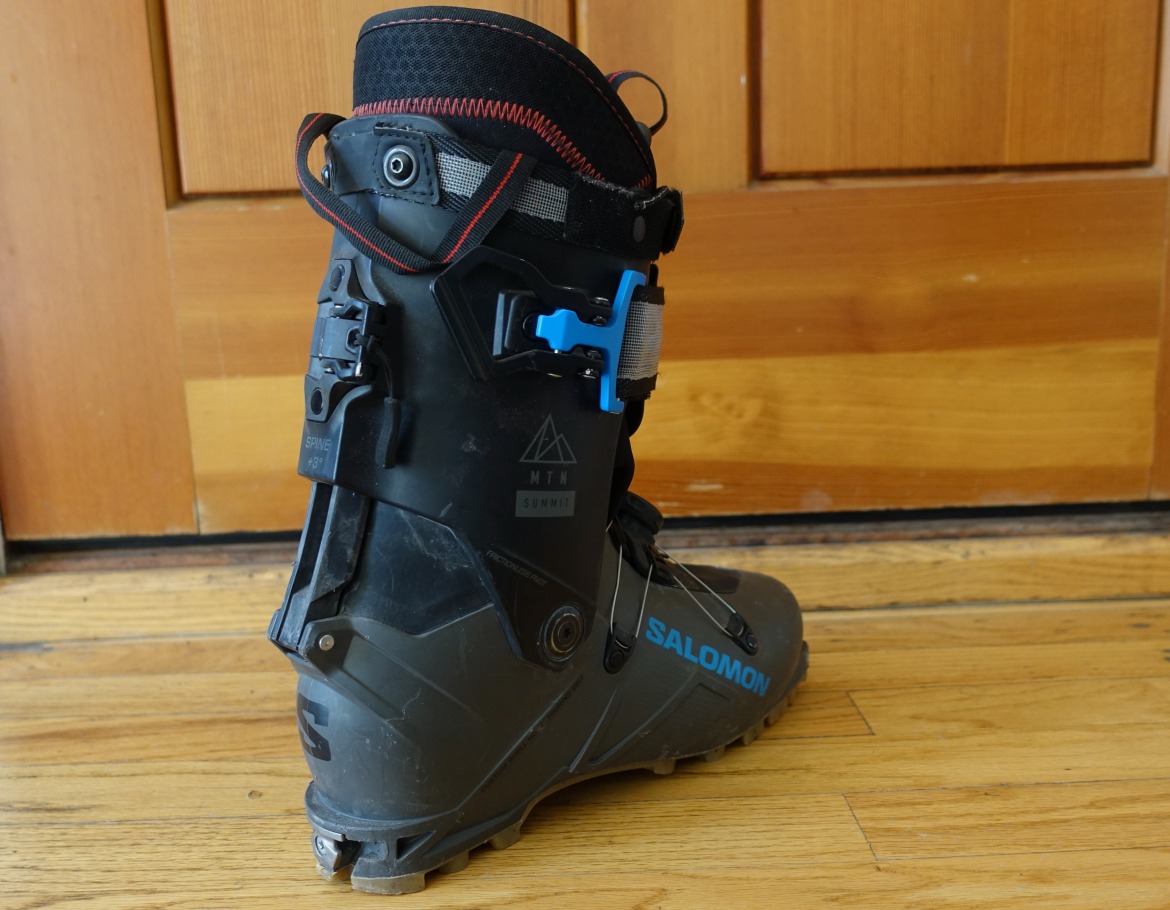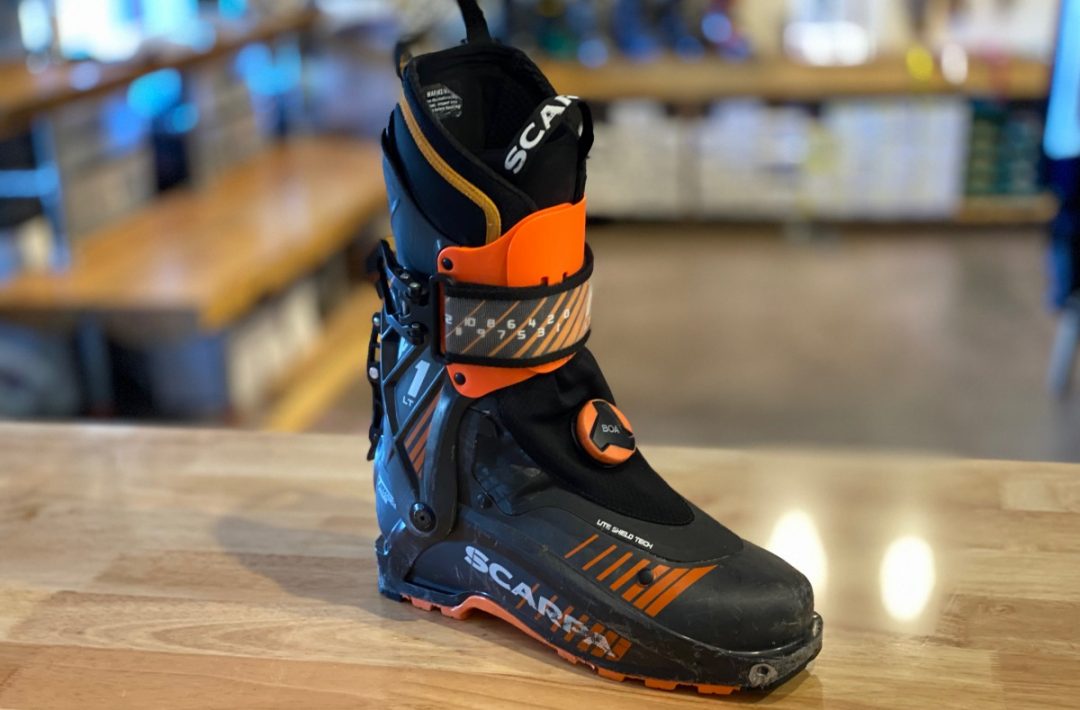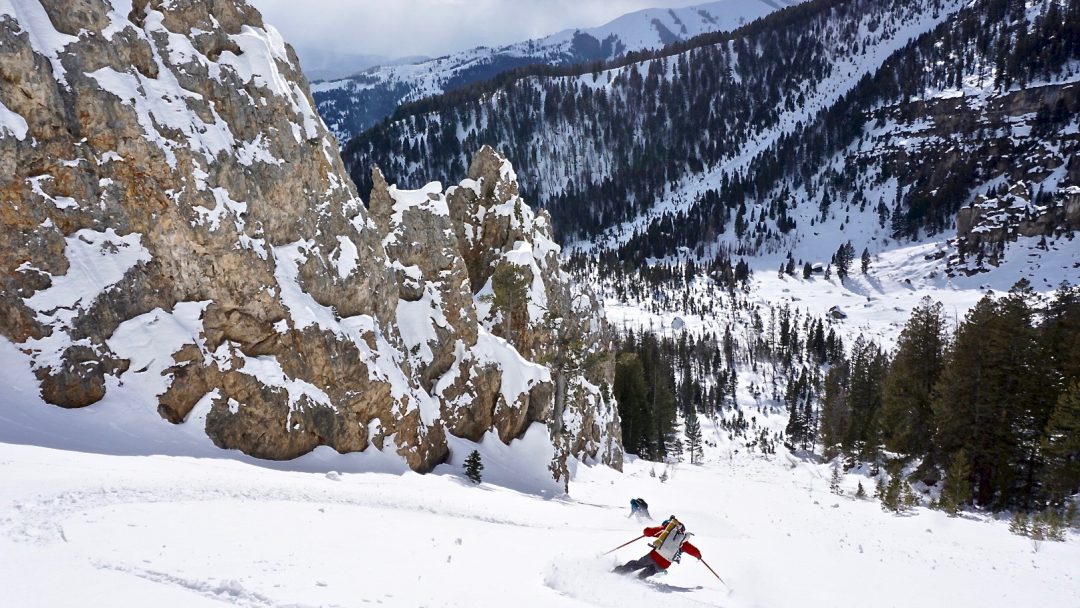The Scarpa 4-Quattro SL promises and delivers legit stiffness. The sole is GripWalk compatible for the 50/50 skiers out there. Don’t be fooled by the 50/50 … it could go 100/0. Here’s a first look.
I’ll make some assumptions here: the 4-Quattro refers to the four-buckle system and the four boots that comprise the 4-Quattro line: two models for women, two for men. Lots of fours.
Four magnesium buckles help stiffen the ride. And just to ensure the foot retention is solid, a freeride-worthy powerstrap up top keeps the SL legit stiff. Scarpa calls the 4-Quattro SL a 120 flex, 10 less on the flex scale than the slightly heavier and stiffer Quattro XT. For women, the XT is a 115 flex, and the SL a 100. I know women charging way harder than me, so if you want the 130 or 120 flex, try the men’s options.
The plans for the 4-Quattro SL are as follows: the pair arrived in Bend several weeks ago. I took them out for a few laps up the local lift-served volcano (still shut down for the off-season) for this first look and then handed them off in Seattle to Rob Copollillo for the full review.
Uphill First Impressions
I’m usually not a four-buckle boot skier, but after a few tours in the 4-Quattro SL, I’m angling for a pair of four buckle boots for keeps and hid my disappointment when handing the boots to Rob. I did say something like, “if the boots don’t fit right, let me know….”
The stated range of motion on this boot is 61 degrees. I know; maybe it was 60.6 — why not round up? No matter, the boot passes the tourabilty test, and I’d say for most skiers focusing more on the down than the up, you’ll be pleasantly surprised at how forgiving the boot is while ascending. To the shock of some readers, I did deploy the hi-risers on several occasions while skinning. So it goes with a beefier boot and a more limited ROM.
The lockout mechanism is simple, vertically oriented, and reliable in my limited use.
I was very pleasantly surprised while skinning. I expected meh; I got stoke—the boot over-delivered.
First Impressions on the Downhill
I can say nothing more than the 4-Quattro SL skis like a champ. We were just transitioning here from rock skis to less battered boards — I had the G3 FINDR 86 underfoot. The ski is a reliable, stable, and predictable plank (which I love), and with the Scarpa boot helping initiate the turns, the chunder and chop and breakable were way more tolerable. Some more hardcore skiers than I will opt for the XT version with the stiffer 130 flex. The SL’s 120 flex rating felt plenty stiff and progressive, and it’s as close as I’ve come to my old Lange XLRs back when the Mahre brothers ruled the race scene. Stiffer boots can make the downs more fun. Such was the case with this boot. Thank you four buckles, overlap shell, and powerstrap.
The Fit
The fit might be finicky for some. The instep and toe box appear to have lower volume. The toe box, for my feet, felt fine, as did the instep, but I can see it being trouble for those with higher insteps. If you are used to the venerable Scarpa Meastrale series, you’ll note the trimmed-down appearance of the 4-Quattro line of boots.
I’m a solid 27.5, and the 4-Quattros break on the 1/2 size. The 26.5 and 27 share the same shell but have a 26.5 or 27 lasted liner, respectively. The 27.0 fit fine; I would want maybe 1.5mm more room up front for the big toe on the left foot (it’s a bit longer than the right foot).
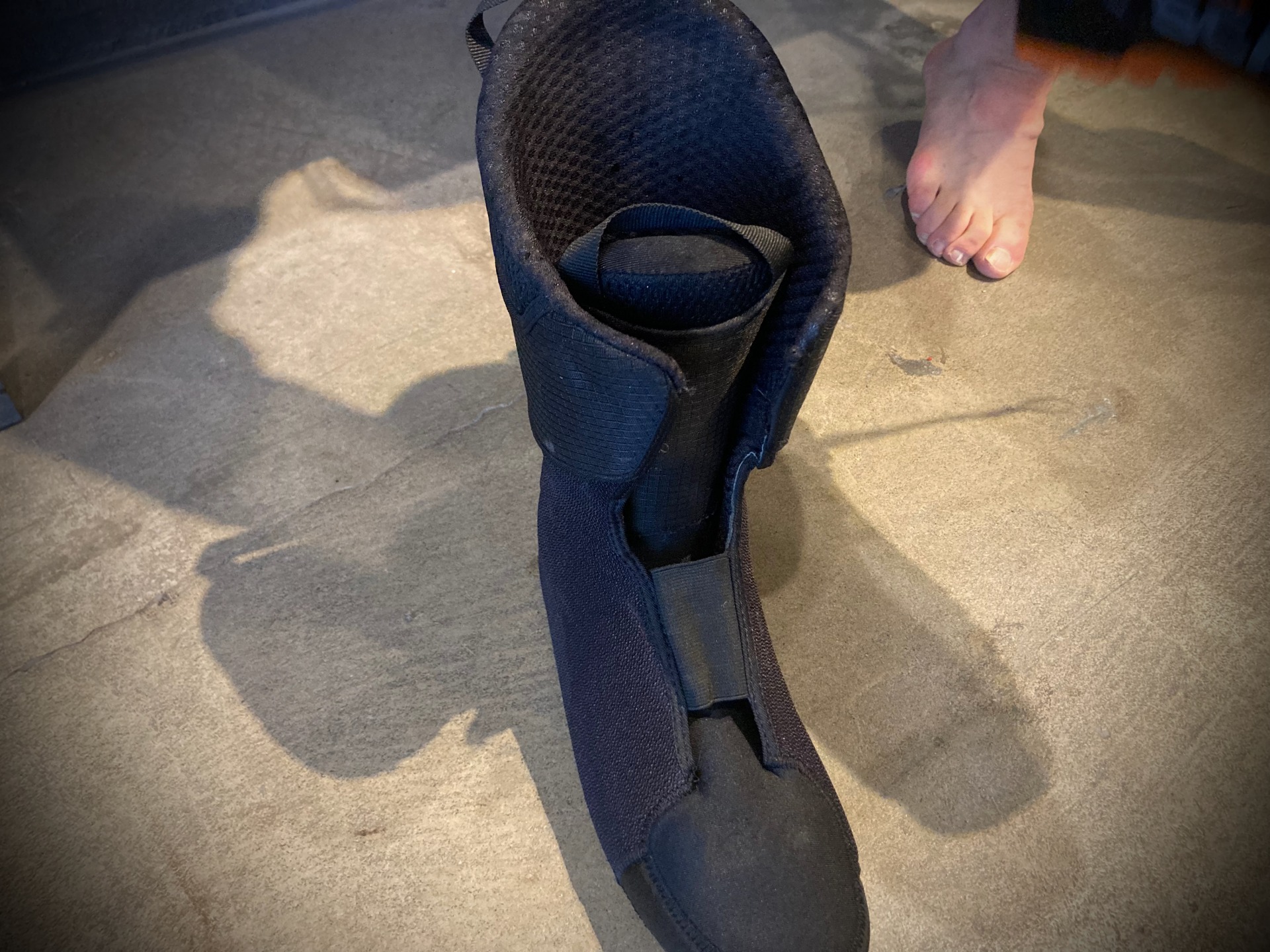
As usual, Scarpa outfits the boot with a heat-moldable Intuition liner which is beefed up to be a solid match for the four buckle + powerstrap retention system.
Final Thoughts for the First Look
The boot has been plugged pretty hard by Scarpa. The 4-Quattro line is GripWalk compatible, meaning the boots work with both tech bindings, GripWalk-certified alpine bindings, and MNC bindings like the Salomon Shift. For you 50/50 (on-piste/off-piste) skiers out there, a 4-Quattro could meet all your needs. And honestly, if it fits, and you are an all-the-time human-powered skier, the 4-Quattro ST could be a daily driver for those desiring burly stiffness and sufficient tourability. Don’t be fooled by the 50/50 … it could go 100/0.
The 4-Quattro SL Specs
Size tested: 27
Last (claimed): 100mm in the 27
Weight Verified: 1432g (a bit lighter than a 27.5 Fischer Transalp Pro) and a few paper clips lighter than a Scarpa Maestrale.
Shell/Cuff Material: Pebax R-New® Shell with an over-injected Carbon Grilamid® LFT insert
Sole: Presa Ski-01/GripWalk Tour
Liner: Intuition/heat moldable
ROM: 61 degrees
Flex rating (claimed): 120
Forward Lean: 17 +/-2
Price: The SL is $699, and the XTs cost $799.
Jason Albert comes to WildSnow from Bend, Oregon. After growing up on the East Coast, he migrated from Montana to Colorado and settled in Oregon. Simple pleasures are quiet and long days touring. His gray hair might stem from his first Grand Traverse in 2000 when rented leather boots and 210cm skis were not the speed weapons he had hoped for. Jason survived the transition from free-heel kool-aid drinker to faster and lighter (think AT), and safer, are better.

